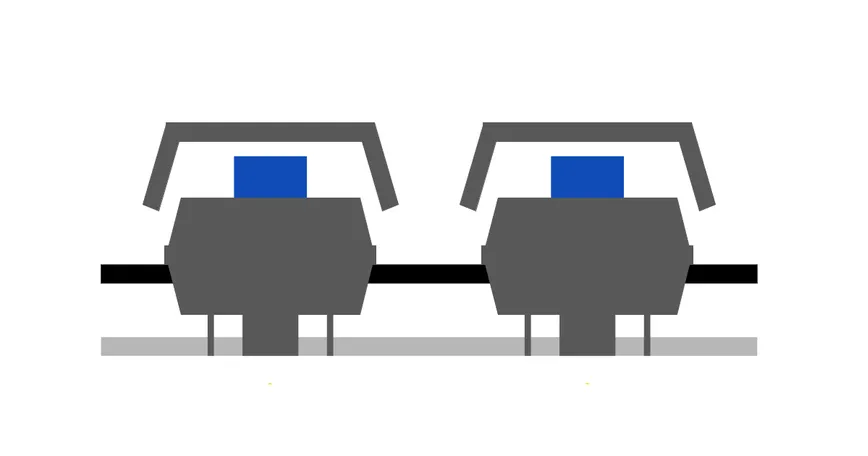
How Does It Work? The Structure and Mechanism of Mechanical Keyboards
What makes mechanical keyboards different from other keyboards? This article explains their structure and mechanism.
Modified at: 2025.6.19Posted at: 2023.5.30
Components of a Mechanical Keyboard
A mechanical keyboard is mainly composed of the following four parts.
- Keycap
- Circuit board
- Case
- Key switch
Parts (1) to (3) are common to most PC keyboards, not just mechanical keyboards. If there is a difference, it is in the key switch section.
Structure and Function of Mechanical Key Switches
The major difference between mechanical keyboards and other keyboards is that each key has its own switch.
In other keyboards, switches or sensors are on the circuit board, and pressing a key activates the switch or sensor on the board, generating an input signal. In mechanical keyboards, each key has its own switch.
Because each key has an independent switch, you can simply replace the switch if it fails, and the keyboard can respond to very rapid inputs.
Keycaps of Mechanical Keyboards
Visually, the keycaps of mechanical keyboards are not much different from those of other keyboards. If anything, the keycaps tend to be slightly taller.
However, keycaps for mechanical keyboards are designed to be attached to the switches, so they can only be used with compatible switches.
Circuit Board of Mechanical Keyboards
The circuit board of a mechanical keyboard looks similar to that of other keyboards, but it is designed to have key switches attached, which is a major difference.
Therefore, the circuit board of a mechanical keyboard cannot be used in other keyboards, but it may be possible to use switches from other mechanical keyboards.
Keyboard Case of Mechanical Keyboards
Since mechanical keyboards have independent key switches, the keyboard case design can be relatively flexible.
There are designs where the case covers the keys like other keyboards, and the "floating design," where the keys appear to float, is possible only with mechanical keyboards that use key switches.
In any case, there is no functional difference between the keyboard case of a mechanical keyboard and that of other keyboards.
Mechanism of Mechanical Keyboards
Traditional keyboards have all the key switches (or sensors) mounted on the keyboard’s circuit board, and the board detects the input. On the other hand, mechanical keyboards have independent switches for each key, so the key switch itself detects the input. This is the main difference.
Also, with individual switches, when you press a key, the stem of the switch moves downward and creates an electrical contact, which generates the input. Conversely, releasing the key turns the switch off.
Because of this mechanism, it is possible to change the actuation point for key input or adjust the force required to press each key switch.
Therefore, with mechanical keyboards, you can choose your favorite key switches and customize the typing comfort to your liking.